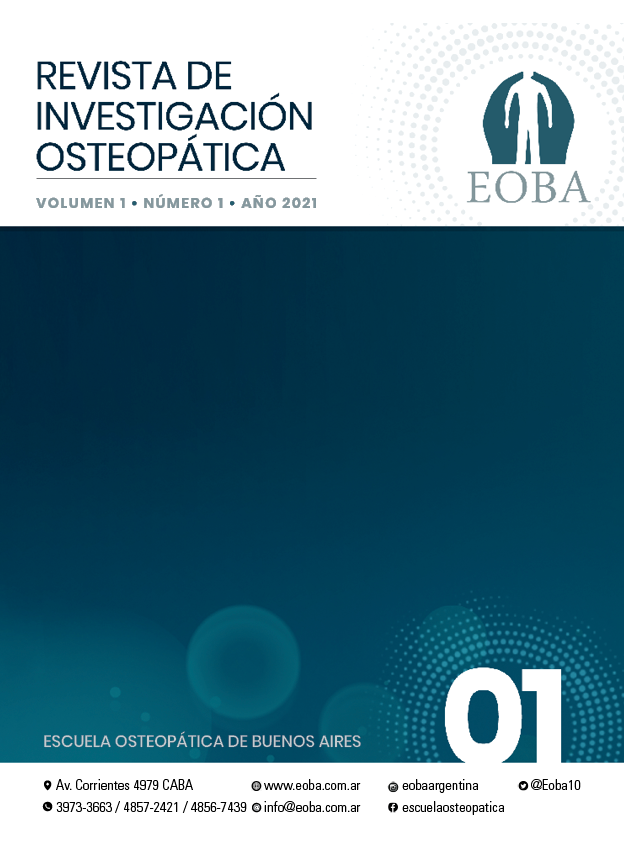Effects of Balanced Ligamentous Osteopathic Technique over L5 in low back pain
Abstract
Due to the high incidence of non-specific low back pain in the world population that don’t present a response with conventional tools, a quantitative register is sought, through a Balanced Ligamentous Osteopathic Technique, that responds to its effectiveness on the ligaments iliolumbar elongated by the vertebral injury, that is, the correction of a second-degree injury of the 5th lumbar. The purpose of this study was to determine if there is a decrease in local pain and an increase in trunk flexion movement in Lumbosacral Hinge after applying the Balanced Ligament Osteopathic Technique on the transverse apophysis of the 5th lumbar and to emphasize the importance of the treatment of ligament structures in the specific biomechanical integration of the entire spine. This design consisted of two groups, an experimental one that received the treatment detailed in the present work, while the second group was the control group, which received a placebo intervention. It was made up of two groups, one of an experimental type, of 72 participants, who received the treatment detailed in the present work, while the second group of other 72 participants, was the control group, which received a placebo intervention. Quantitative pain values were taken through the Algometer (local pain) and the "ground finger" test to record the presence of the limits that pain generates for the trunk flexion movement. The "ground finger" test resulted in an increase of 62.6% for the experimental group and 6.7% for the control group, before and after the intervention. The same occurred in the Algometer record before and after the intervention, giving a 133% increase in tolerance to pressure in the experimental group and in the control group it did not exceed 1%.References
Choi HW, Kim YE. Effect of lumbar fasciae on the stability of the lower lumbar spine. Comput Methods Biomech Biomed Engin. 2017 Oct;20(13):1431-1437. https://doi.org/10.1080/10255842.2017.1370459
Y Yeni YN, Kim DG, Divine GW, Johnson EM, Cody DD. Human cancellous bone from T12-L1 vertebrae has unique microstructural and trabecular shear stress properties. Bone. 2009 Jan;44(1):130-6. https://doi.org/10.1016/j.bone.2008.09.002
Hammer N, Steinke H, Lingslebe U, Bechmann I, Josten C, Slowik V, Böhme J. Ligamentous influence in pelvic load distribution. Spine J. 2013 Oct;13(10):1321-30. https://doi.org/10.1016/j.spinee.2013.03.050
Ingber DE, Wang N, Stamenovic D. Tensegrity, cellular biophysics, and the mechanics of living systems. Rep Prog Phys. 2014 Apr;77(4):046603. https://doi.org/10.1088/0034-4885/77/4/046603
Sutherland WG, Wales A. Teachings in the Science of Osteopathy. Portland, Ore: Rudra Press; 1990.
Pool-Goudzwaard AL, Kleinrensink GJ, Snijders CJ, Entius C, Stoeckart R. The sacroiliac part of the iliolumbar ligament. J Anat. 2001 Oct;199(Pt 4):457-63. https://doi.org/10.1046/j.1469-7580.2001.19940457.x
Freres M, Mairlot, MB. Maestros y claves de la postura. Editorial Paidotribo. 2000. p. 89-139.
Wilke J, Engeroff T, Nürnberger F, Vogt L, Banzer W. Anatomical study of the morphological continuity between iliotibial tract and the fibularis longus fascia. Surg Radiol Anat. 2016 Apr;38(3):349-52. https://doi.org/10.1007/s00276-015-1585-6





